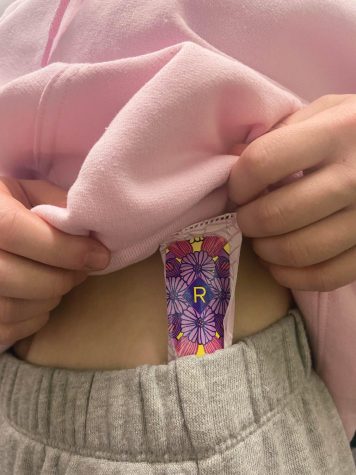Fighting in school: Why bother?
February 5, 2022
Earlier this year, junion Nathan Sullivan found himself in the midst of a more than just a verbal disagreement with a fellow student.
“He [opposing student] was talking trash and we were both beefing back and forth,” Sullivan said. “He was talking about fighting and then we got into an argument in front of the school. He swung on me and things went from there.”
Statistically, the percentage of high school students who reported having been involved in a physical altercation has gradually decreased from 31 percent in 2009 to 22 percent in 2019. And on a global scale, about 150 million students ages 13 to 15 report facing violence against their peers in a school envrionment. But, ever since the re-start of in-person teaching after the effects of COVID-19, it seems that students are getting more and more restless. Hungry, almost, for drama.
According to Education Week, the notable spike in our nation’s violence is due to serveral underlying factors including the social unrest following the murder of George Floyd and the COVID-19 pandemic. And, as alarming as it is, these trends continue to trickle down into the lives of America’s young adults.
Here at Martin, it seems that spontaneous outbursts of violence are growing more and more. However, that’s not necessarily the case. Having complete in-person classes for the first time in a year and a half has been an adjustment for us all.
Most of the student population haven’t been in the same building with each other up until this year. Consequently, it feels overwhelming and overcrowded. In a “normal” year, the amount of physical disagreements would be around the same as they have been this year. Assistant principal Amanda Cobb shared about the initial and continuous consequences on fights here at school.
‘The initial consequence for a fight is that the student(s) are home-based for two days. Depending on the time of day , we contact parents, then they’re sent home and suspended,” Cobb stated.
Nevertheless, these fights are getting old.
For teachers and administrators especially, after having a year of slim to no issues, we all keep wondering the same thing: Why? Why do these students feel the need to dish things out in the most violent ways possible?
With no prior issues with the student, Sullivan confessed the entire issue was a waste of time for everyone.
“We were arguing over stupid stuff, and even if we didn’t fight, things would be the same as they are now so it doesn’t matter and there was literally no point,” Sullivan stated.
As equal as the fight was, the two students were both suspended for two days. Sullivan got into trouble with his family, and had some very enlightening advice for anyone else in his shoes.
“Try to resolve things before you get into physical matters cause it’s really not worth getting in trouble for it,” Sullivan said.
While some fights end up being “stupid” on both ends, others still have questons behind it.
Junior Max Rhodes also landed in a physical disagreement, but with a very different background than Sullivan. Rhodes had no idea who or why the opposing student did what he did, and still does not understand.
“It was really random,” Rhodes said. “He said something to me in the hallway and I was like, ‘What? I don’t even know who you are.’ I don’t even know what grade he’s in.”
Rhodes was walking out of the locker room with his friends when the opposing student pushed him from behind.
“I was freaking out,” he said. “Right after it was over I called my mom and she told me to go to my coaches. When I did, we got things worked out and everything was over.”
When dividing up the different types of fights, what starts it and how things end up usually separate one from another. Some cases, like Rhodes, someone else is just looking to take out some anger and nothing much happens. In cases when students carry on multiple fight offences, Cobb cleared up the worsening effects.
“When students start to exhibit continuous behavior, we start looking at what else is going on in the students life and if there’s anything else going on. In terms of discipline wise, the consequences go up depending on the kid and situation. They can have additional days, OCS, choices, or even up to Turning Point,” Cobb stated.
As unfortunate as this disagreement ended up as compared to Sullivan or Rhodes, the consequences of fighting at school, especially on campus, are real. Stay safe and stay smart out there kids.
